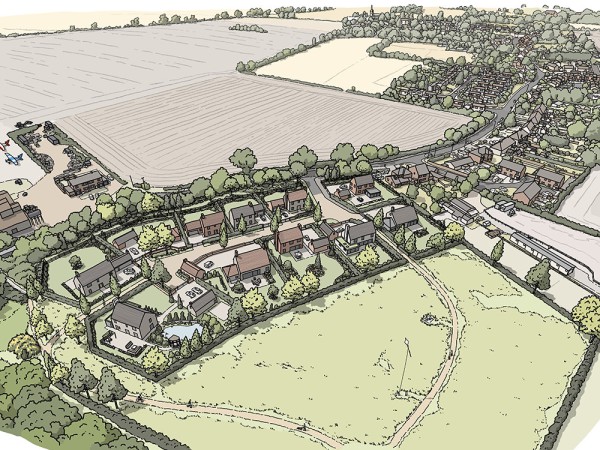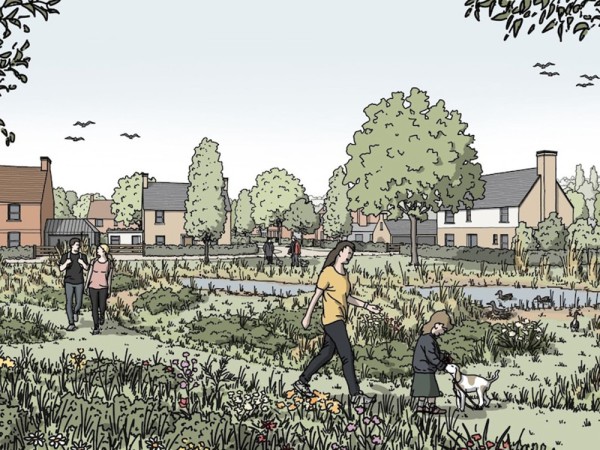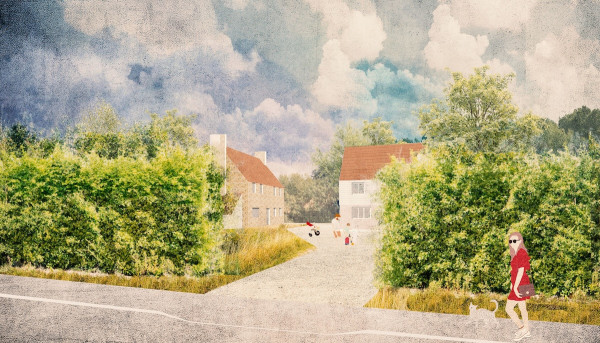Not everyone wants to live in an identikit house on a generic street in a characterless town. But that seems to be the way our country’s going. The volume housebuilders – you’ll know who we mean – have given developers a bad name. Their cookie-cutter, one-size-fits-all developments aren’t driven by a sense of place, people or community. They’re driven by quick profits, the interests of scale, and the pockets of their shareholders.
If they do succeed in creating a narrative inspired by a sense of place and a sense of history, it’s all a thin veneer and a calculated pastiche. They happily give us their mock-Georgian ‘Winchesters’, but you’re as likely to find one of these somewhere between Bath and Bristol as you are in Winchester itself.
We’re not against development per se, because we know people need houses. And development hasn’t always been like this. Our best cities, towns and villages have evolved organically – or thoughtfully – over centuries, adapting to communities, to the landscape, and to the needs of the people who call a place home.
Maybe you too want to rewrite the story, create good places, and show there’s another way of doing things.
There’s plenty of inspiration, then, for people who want to change the narrative. And we know we’re not the only ones trying to give development a new and better name. Maybe you too want to rewrite the story, create good places, and show there’s another way of doing things. Maybe you also believe in sensitive, landscape-led development, and you hate the idea of generic, bland design. Maybe, like us, you want to work with the differences of communities, not against them. And maybe, like us, you see value in paving the way for self-build plots which people can make their own.
Having a good grip on the evolution of a place can be such a positive thing, and ‘masterplanning’, as it’s known in the industry, doesn’t have to mean squeezing out individuality and self-expression. We see it, instead, as a brilliant opportunity to provide the right conditions, the right balance, and the right framework for everyone to thrive.
By bringing together our skills, knowledge and vision – ours as architects, yours as a developer – we can make great things happen.
By bringing together our skills, knowledge and vision – ours as architects, yours as a developer – we can make great things happen. On the one hand you need to share our resolve and our excitement about the possibilities, and on the other you need to be in possession of – or on the lookout for – a piece of land that’s ready and waiting for a more useful purpose. But we’re not talking about a great swathe of countryside here. It could be just a small plot on the edge of a town or village, a string of garages, or even a large garden that’s seen better days.
First, it’s time for a bit of serious, thoughtful research. We dig deep (but no spades in the ground yet!) into the character of the site: how it came to be and how it relates to everything and everyone around it. We want to build a vision we can all believe in, bring people with us on the journey, and tell a story everyone can get behind.
There are some things we feel strongly about and which we’ll fight for – with grace and good manners, of course. Prioritising pedestrians over cars is one, and giving each self-build plot the breathing space – and views out – it needs is another. By the same token, we see ‘in-between spaces’ as inherently and fundamentally valuable. Nature might not perform well on a spreadsheet, but this is about much more than easily quantifiable, quick returns.
With a plan for the land sketched out, the number and position of plots agreed, and the all-important entrance off the highway approved, you might think our work is done. But it’s in everyone’s interests to set out a ‘design code’ by which this new place can evolve. We think of it not as a rigid set of rules but as a reassuring frame of reference.
For the planners, it’s proof of a considered, coherent scheme with parameters in place. For each self-builder, it’s a firm but gentle steer. It gives them certainty that – if they abide by the code – permission for their house will follow. (And if they ask us to go one step further and come up with a full design for their new house , then we’ll be ready to do that too.)
Far from inhibiting creativity or encouraging yet another uninspiring development (the sort we’ve been so keen to distance ourselves from), the design code is there to set the bar high, to raise aspirations, and to keep the vision alive.
All of this is what ‘placemaking’ – to use the slightly opaque industry term – means to us, and we love the opportunities it offers: to come together with like-minded partners on a mission we all share, to help self-builders express their individuality and realise their dreams, and to give our towns and villages the chance to thrive.
We’re imagining a world where development becomes something to celebrate and only a force for good. But, most of all, we’re imagining a world where developments naturally grow into part of the landscape, part of the community, and a place called home. This is our manifesto, then, for sensitive, beautiful, welcome development. Join us.


